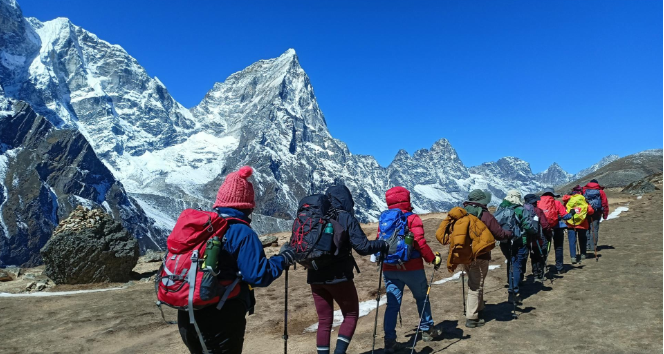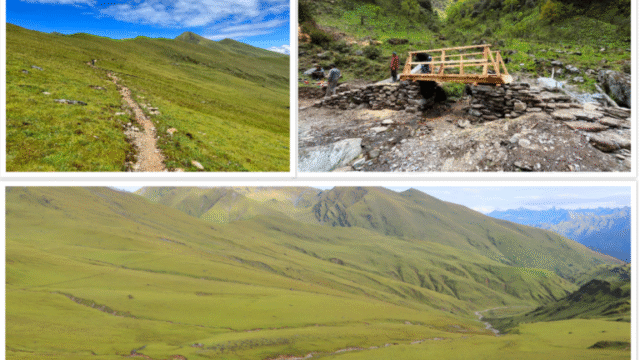The world’s highest peak, Mount Everest, and the surrounding Khumbu region have witnessed an influx of tourists, filling this enchanting destination. On a single day, Lukla Airport recorded an impressive 200 flights, highlighting the increasing interest in trekking and mountaineering.
According to Umesh Panthi, head of the Civil Aviation Authority of Nepal in Lukla, there were 198 flights from Ramachhap’s Manthali and Kathmandu on Tuesday alone. This included 61 flights by airplanes and 139 by helicopters. That day, a total of 1,539 tourists entered the Khumbu region.
Out of these, 167 domestic tourists and 667 international visitors arrived via airplane, totaling 804, while 695 tourists came by helicopter. Panthi noted that with the trekking season commencing, the number of flights is expected to rise. However, many flights returning to Kathmandu and Ramachhap from Lukla often carry few or no passengers. Amrit Magar from Tara Airlines explained that due to the high demand for flights to Lukla, the return flights tend to be less crowded.
The start of the trekking season has also energized local tourism businesses. Lamakaji Sherpa, a businessman in Namche, expressed excitement about the influx of visitors, stating, “We are currently overwhelmed with hospitality for our guests.”
Hotel operators in Lukla, Jorsalle, Phakding, Namche, and Khumjung are busy welcoming tourists. The roads, rest areas, and hotels in the area are bustling with visitors. Manoj Kumar Mandal, an information officer at Sagarmatha National Park, mentioned that it is mandatory for tourists to register at the Jorsalle entry point when entering the Everest region.
Established in 1975, Sagarmatha National Park covers an area of 1,148 square kilometers. The park’s Gokyo Lake was included in the Ramsar list in 2007, and it has been a UNESCO World Heritage Site since 1979. The park is home to a variety of wildlife, including musk deer, thar, goral, langur monkeys, pheasants, snow leopards, and Tibetan snowcocks. Additionally, more than 3,000 people reside within the park area, as reported by conservation officer Mandal.
Source: RSS






